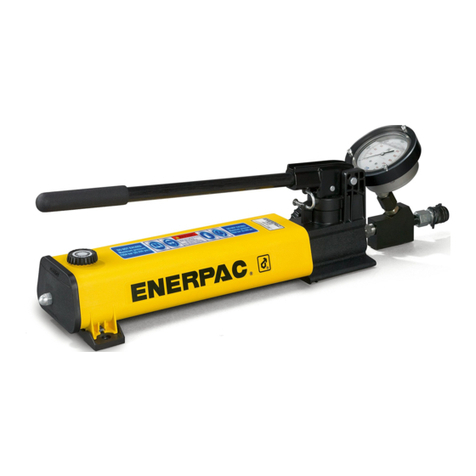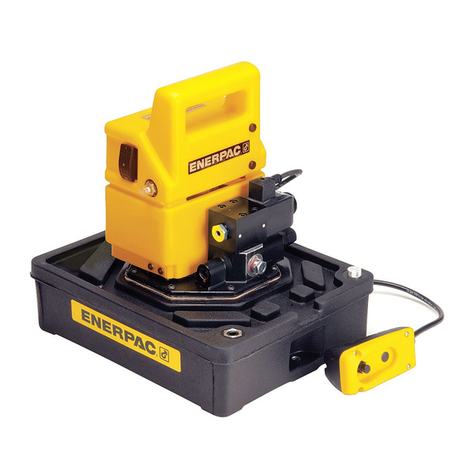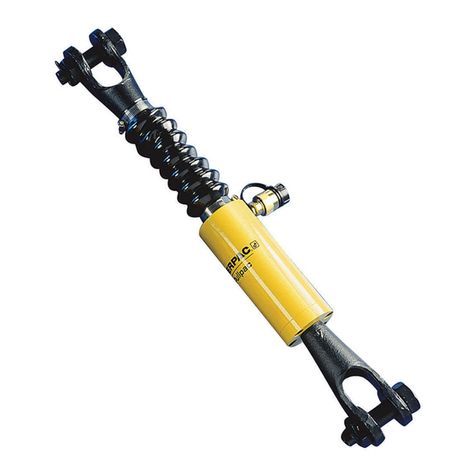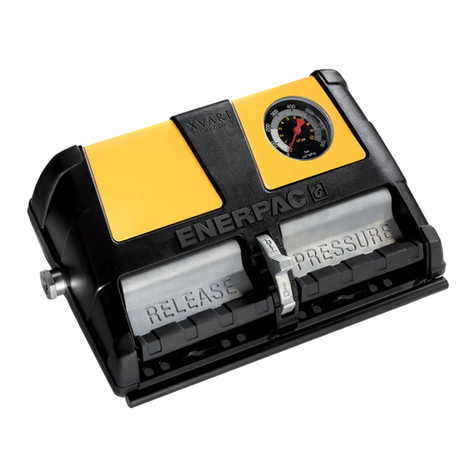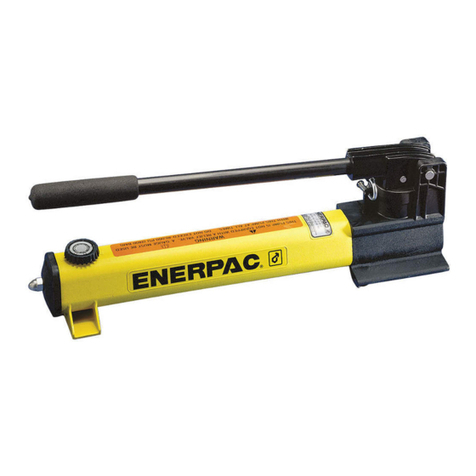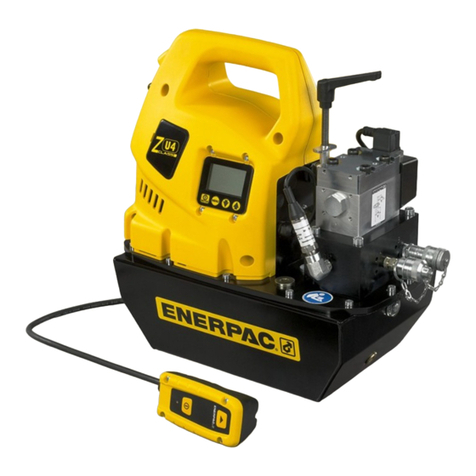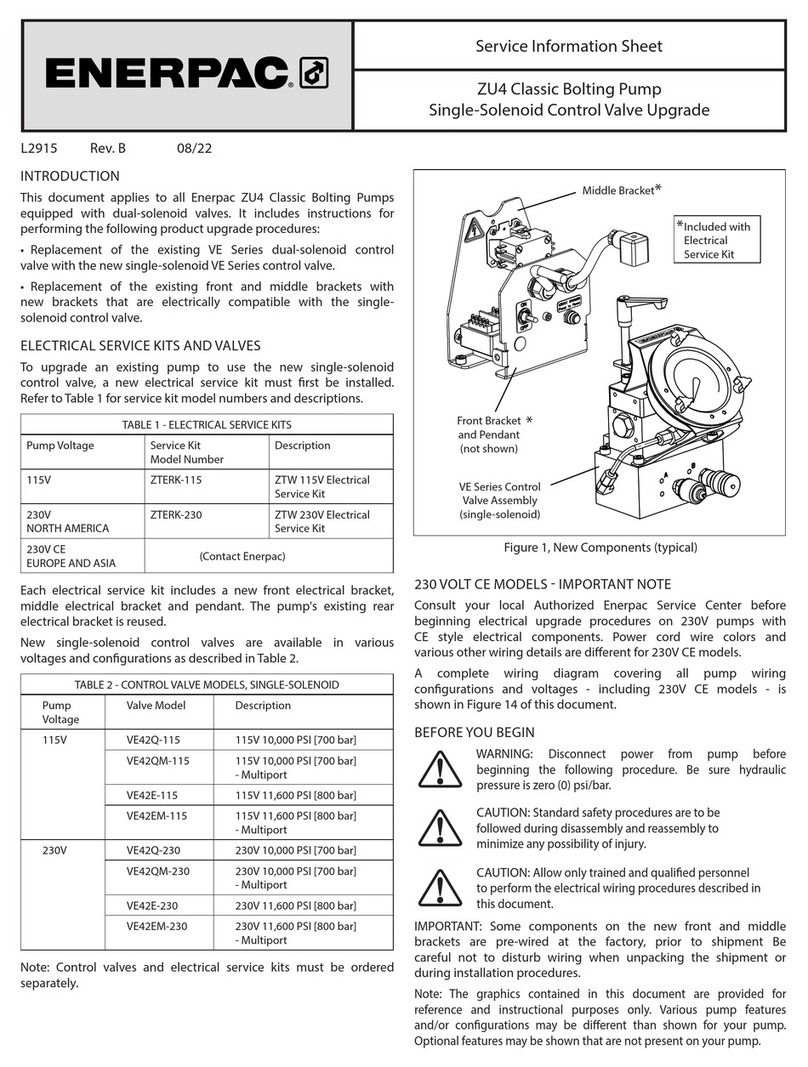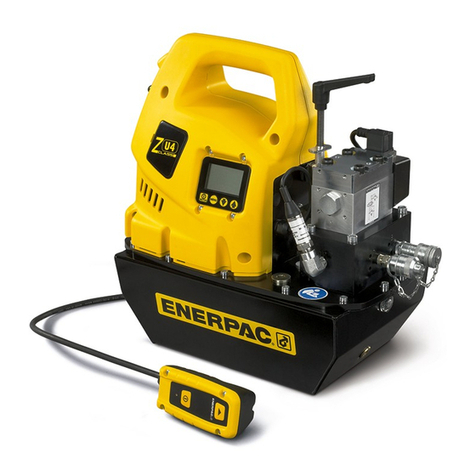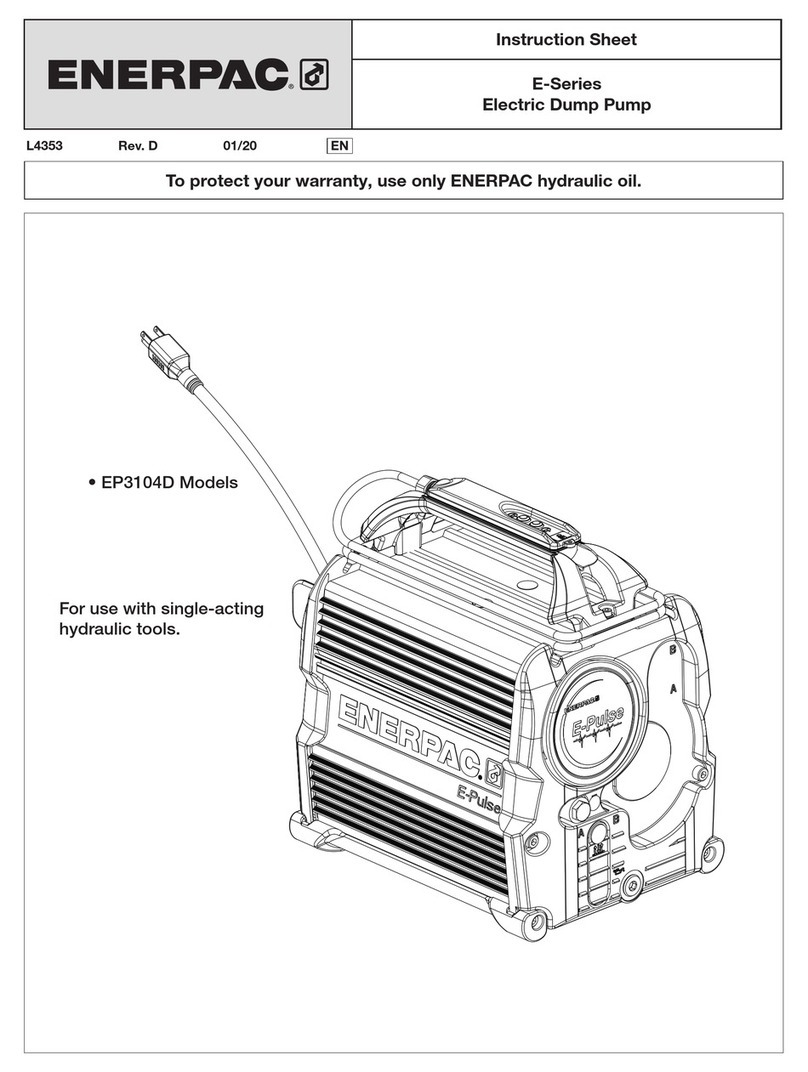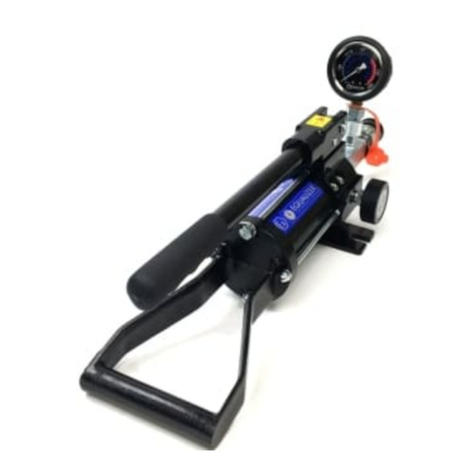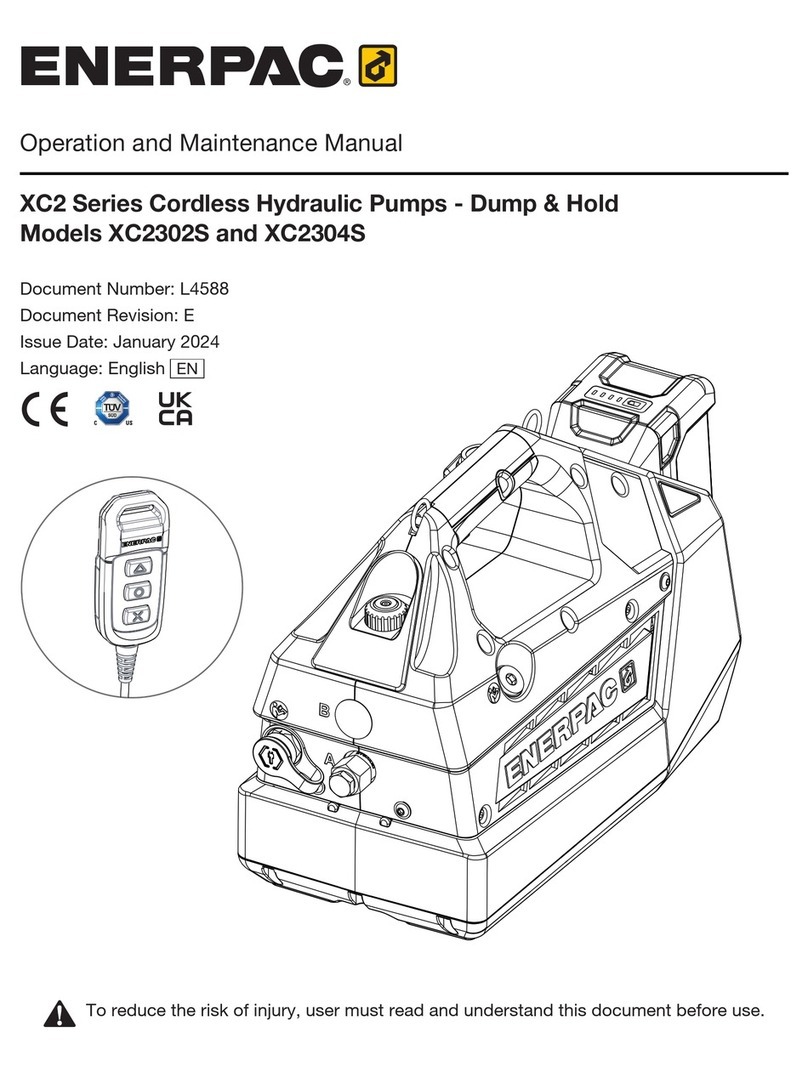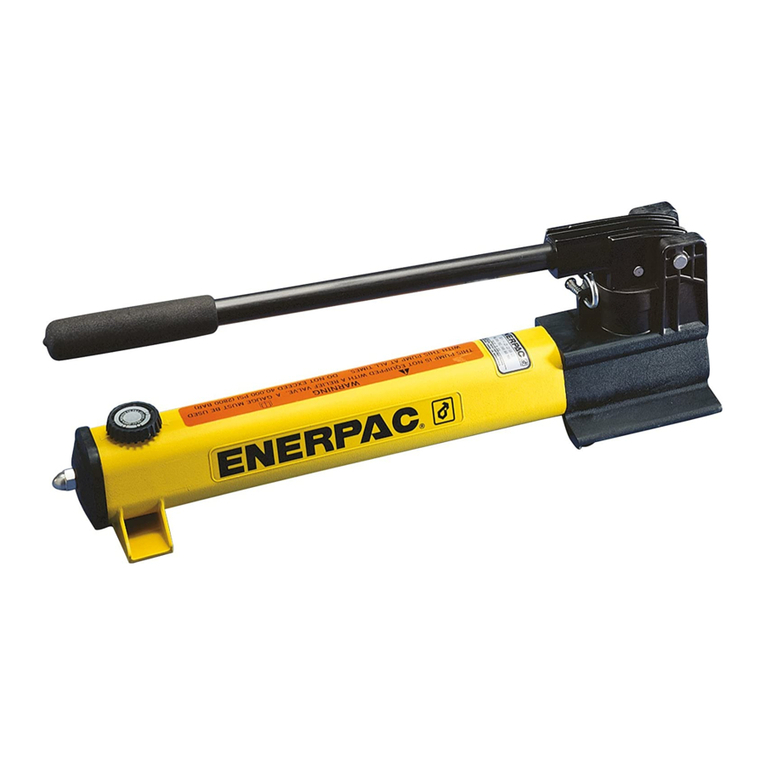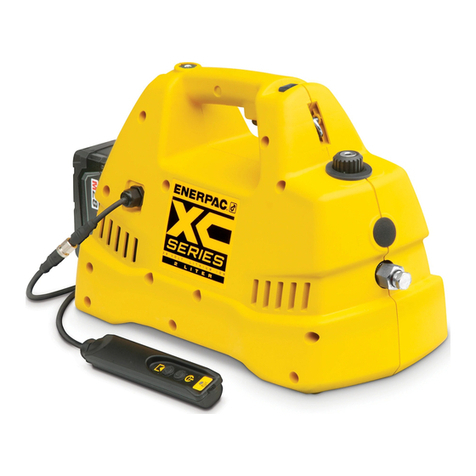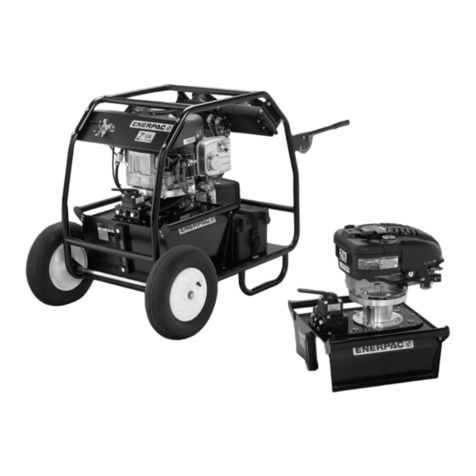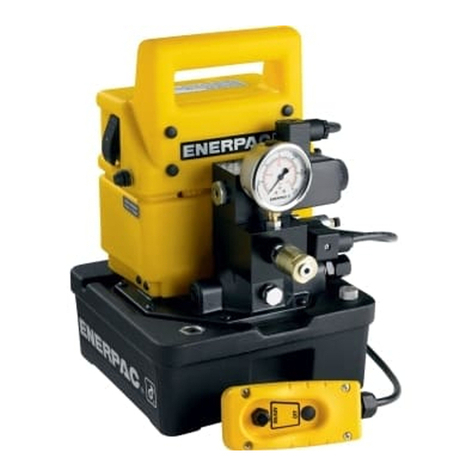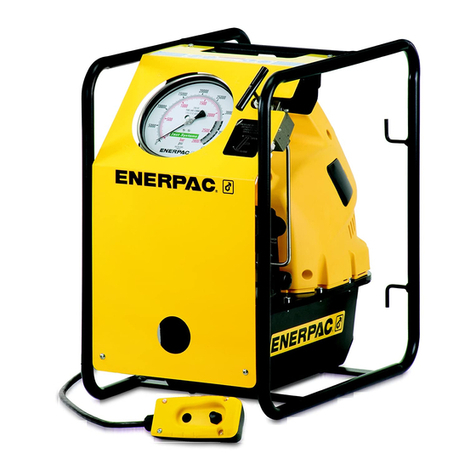2
a. Place new white o-ring from kit between block and
manifold.
b. Anchor piston block by compressing piston spring against
eccentric bearing and hold firmly in place. Use care to
prevent block from cocking. Tighten the two 3/16" socket
screws (item 9). Torque to 14-16 ft-lbs.
2. Assembly high-flow piston block (item 5, large .53 diameter
piston).
a. Place new black o-ring from kit between block and
manifold.
b. Anchor piston block by compressing piston spring against
eccentric bearing and hold firmly in place. Use care to
prevent block from cocking. Tighten the two 3/16" socket
screws (item 9). Torque to 14-16 ft-lbs.
Pump Re-Assembly
1. Install safety relief valve (item 18) to manifold using a new
gasket (item 17) from repair kit.
2. Install check for high flow piston block by replacing the 1/4"
ball, spring, and plug (items 29, 30, 31) with new ones from
kit. Coin seat if required by using a 1/4" coining tool.
3. Install unloading valve assembly (item 32) into high flow
piston block (item 5).
NOTE: Unloading valve comes preset from factory and is not
adjustable. If valve is defective, replace.
Postition and tighten elbow (item 19) and unloading tube
(item 20) to point at the gear (item 11) for lubrication.
4. Install new gasket (item 33) on reservoir (item 34). Align
holes on pump manifold with holes on reservoir.
NOTE: After testing procedure is complete, reservoir gasket
must be sealed. Apply a thin continuous bead of RTV sealant
to both sides of the gasket (item 33).
5. Install the two 1/4" socket screws (item 69) and gaskets (item
70 from kit) to valve adaptor block. Torque to 12 to 18 in-Ibs.
6. Install the 6 hex head cap screws (items 36) and washers
(item 35) that hold the pump cover plate onto the reservoir.
Lubricate these screws with a drop of RTV sealant and
torque to 12-18 in-Ibs.
4-Way Valve Installation
NOTE: Use a new or repaired and tested 4-way manual valve
(item 50).
1. Assemble connector tube assembly (item 47) with o-rings
(item 48) and back-up rings (item 49) from kit.
2. Replace and install gasket (item 68) from kit.
3. Install valve (item 50 using the five 1/4" socket head screws.
Torque screws to 11-13 ft-lbs.
Wiring Connections
Refer to wiring diagram in repair parts sheet.
1 Install the foam baffle (item 53) on motor. Center baffle
between upper and lower air vent holes in motor.
2. Attach power cord (item 40) and pendant cord (item 62) to
pump manifold by using the anchor strap and screws.
3. PUJ only: Connect black motor wire (item 65) flag to relay
(item 23) and then to power switch (item 54).
4. PUJ only: Connect transformer lead wire (item 67) to white
power cord wire and black motor wire by plugging in
connector.
5. PUJ only: Connect white pendant wire to relay (item 23).
6. PUJ only: Connect black pendant wire to transformer (item
22) at transformer connection #8.
7. PUM only: Connect black motor wire (item 65) to power
switch (item 54).
8. Connect black power switch jump wire to thermostat (item
37).
9. Connect black power cord wire to thermostat (item 37).
Shroud Assembly
1. Carefully lower shroud over motor and baffle. Use care to not
disturb wiring and to not damage foam baffle.
NOTE: Make sure baffle is between air vents on motor and
NOT blocking vent slots in shroud.
2. Align holes in shroud with holes in pump manifold.
3. Attach shroud to manifold by tightening the six screws (item
52). Lubricate screws with one drop of Loctite #242 and
torque screws to 12-18 in-lbs.
TEST PROCEDURE
Back Pressure Test
Perform the back pressure test to determine if the high pressure
portion of the system is correctly adjusted and free from leaks.
The pump must be able to reach and hold 10,000 psi. See Table
1 for expected test values.
1. Place the pump assembly on a test bench, lying on its side
where the bottom of the pump can easily be observed. Wipe
oil from bottom of pump assembly.
2. To test the pump, connect a 0-10,000 psi hand pump with a
0-15,000 psi pressure gauge to the coupler on the pump
outlet valve.
3. If the safety relief valve is replaced or is out of adjustment, it
must be set prior to performing the back pressure test.
4. Adjustment of the safety valve is accomplished by activating
the hand pump and observing the pressure gauge. The
safety relief valve will open when its pressure setting is
exceeded.
5. To set the safety relief valve, use a 7/32" Allen wrench to set
the adjusting screw. Turn the safety relief set screw in until
the valve releases pressure at 10,250 to 10,750 psi.
IMPORTANT: Do not "bottom out" the adjusting screw on the
valves, as damage may occur. Continue to adjust the safety
valve.
NOTE: Relief valve may also be set during the Performance
Test.
6. Close the manual valve on the pump being tested and slowly
build pressure until the gauge reads 10,000 psi.
TABLE 1 - USE FOR BACK PRESSURE TEST
Expected Test Valves 110 VAC Pump 220 VAC Pump
Safety relief valve 10,250 to 10,750 psi 10,250 to 10,750 psi
Unloading or by-pass valve 250 to 400 psi 250 to 450 psi
